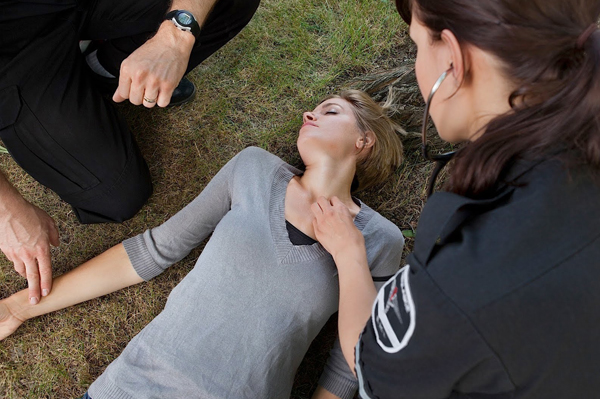NEW 2015 CPR/AED Guidelines
The ILCOR 2015 CPR/AED Guidelines for Adult Basic Life Support and CPR Quality: Lay Rescuer CPR
Here’s what you need to know about changes:
- The crucial links in the out-of-hospital adult Chain of Survival are unchanged from 2010, with continued emphasis on the simplified universal Adult Basic Life Support (BLS) Algorithm.
- The Adult BLS Algorithm has been modified to reflect the fact that rescuers and activate emergency response (i.e. through the use of mobile telephone) without leaving the victim’s side.
- It is recommended that communities with people at risk for cardiac arrest implement PAD programs.
- Recommendations have been strengthened to encourage immediate recognition of unresponsiveness, activation of the emergency response system, and initiation of CPR if the lay rescuer finds an unresponsive victim is not breathing, or not breathing normally (e.g., gasping).
- Emphasis has been increased about the rapid identification of potential cardiac arrest by dispatchers, with immediate provision of CPR instructions to the caller (i.e., dispatch-guided CPR).
- The recommended sequence for a single rescuer has been confirmed: the single rescuer is to initiate chest compressions before giving rescue breaths (C-A-B rather than A-B-C) to reduce delay to first compression. The single rescuer should begin CPR with 30 chest compressions followed by 2 breaths.
- There is continued emphasis on the characteristics of high-quality CPR: compressing the chest at an adequate rate and depth; allowing complete chest recoil after each compression; minimizing interruptions in compressions; and, avoiding excessive ventilation.
- The recommended chest compression rate is 100 to 120/min (updated from at least 100/min).
- The clarified recommendation for chest compression depth for adults is at least 2 inches (5 cm) but not greater than 2.4 inches (6 cm).
- Bystander-administered Naloxone may be considered for suspected life-threatening opioid-associated emergencies**.
**In Canada, Naloxone is a Prescription Only Medicine (POM) listed on Health Canada’s Prescription Drug List. Naloxone can only be dispensed with a prescription. Legally, a prescribed drug may only be administered to the person named on the prescription, not a third party.
For more information: Heart & Stroke Foundation – Highlights of the 2015 American Heart Association Guidelines Update for CPR and ECC

